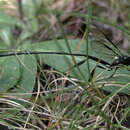Brief Summary
provided by Catalog of Hymenoptera in America North of Mexico
This is a large and diverse group of parasitic Hymenoptera, but the North American proctotrupoid fauna has had little critical study with the result that apparently most of our species remain undescribed. The only comprehensive treatments of the North American Proctotrupoidea are that by Ashmead, in 1893, and that included by Kieffer in his monograph of the world fauna, which comprises three volumes that were published between 1914 and 1926. Kieffer used the name Serphoidea, based on Serphus Schrank, 1780, for this superfamily and that usage was followed generally in the literature of the next thirty years; but Serphus Schrank was set aside by the International Commission on Zoological Nomenclature in 1946 (Opinion 178), under suspension of the Rules, and its synonym Proctotrupes Latreille, 1796, with P. brevipennis Latreille as type-species, was added to the Official List of Generic Names in Zoology as Name No. 616. As a result of that action the name Proctotrupoidea has come into general use again. ~I am indebted to Dr. Lubomir Masner, biosystematics Research Institute, Canada Department of Agriculture, for much helpful advice and for new records, in connection with the preparation of this section of the Catalog.
- bibliographic citation
- Catalog of Hymenoptera in America North of Mexico. 1979. Prepared cooperatively by specialists on the various groups of Hymenoptera under the direction of Karl V. Krombein and Paul D. Hurd, Jr., Smithsonian Institution, and David R. Smith and B. D. Burks, Systematic Entomology Laboratory, Insect Identification and Beneficial Insect Introduction Institute. Science and Education Administration, United States Department of Agriculture.
Proctotrupoidea: Brief Summary
provided by wikipedia EN
Proctotrupoidea is a hymenopteran superfamily containing seven extant families, though others have been recognized in the past, most of these having been removed to a recently erected superfamily Diaprioidea. Of the remaining families, only Proctotrupidae contains a substantial number of species, with over 400 described. The others are small, often relictual groups. See links for individual families for details of life history and diversity.
- license
- cc-by-sa-3.0
- copyright
- Wikipedia authors and editors

